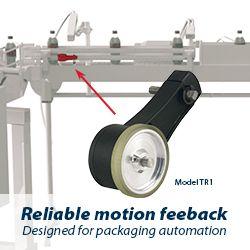America, Regulate Drones Now or Get Left Behind
Robotics expert: Self-driving cars not ready for deployment
Image Processing 101
Postdoc's Trump Twitterbot Uses AI To Train Itself On Transcripts From Trump Speeches
How This New Drone Can Track Your Every Move
Roving robot 'ground drones' take to streets for deliveries
Japanese Firm To Open World's First Robot-run Farm
DARPA - FLA Program Takes Flight
"It's quite large:" Exact Automation showcases world's largest robot
Mobile Robotic Fabrication System for Filament Structures
Greenbot: Driverless Tractor
Experts At Davos Say Weaponized Artificial Intelligence Robots Are Dangerous
Alphabet Shakes Up Its Robotics Division
The Segway Robot
Lego's classroom robotics kit goes wireless
Records 106 to 120 of 171
First | Previous | Next | Last
Featured Product

